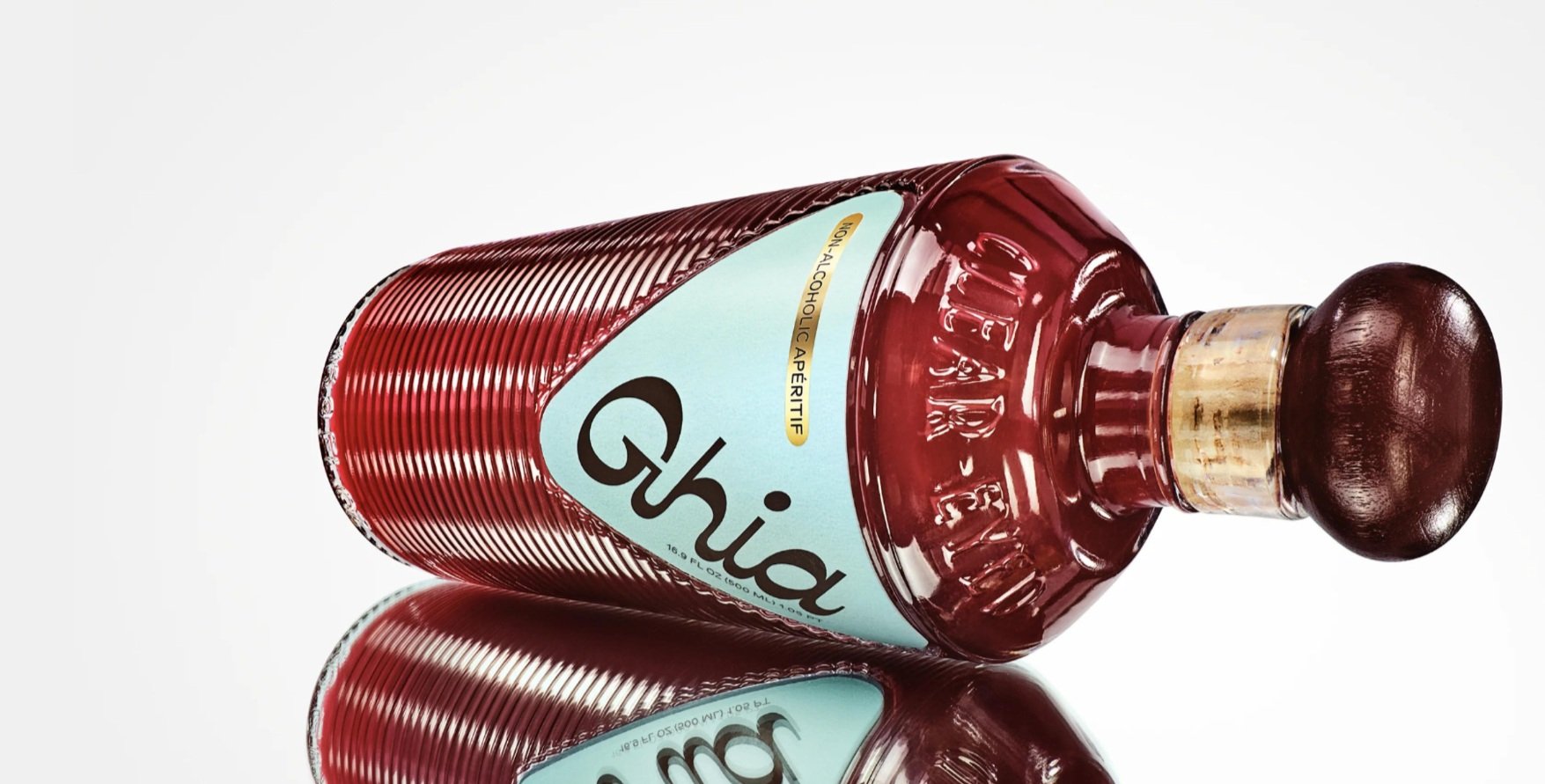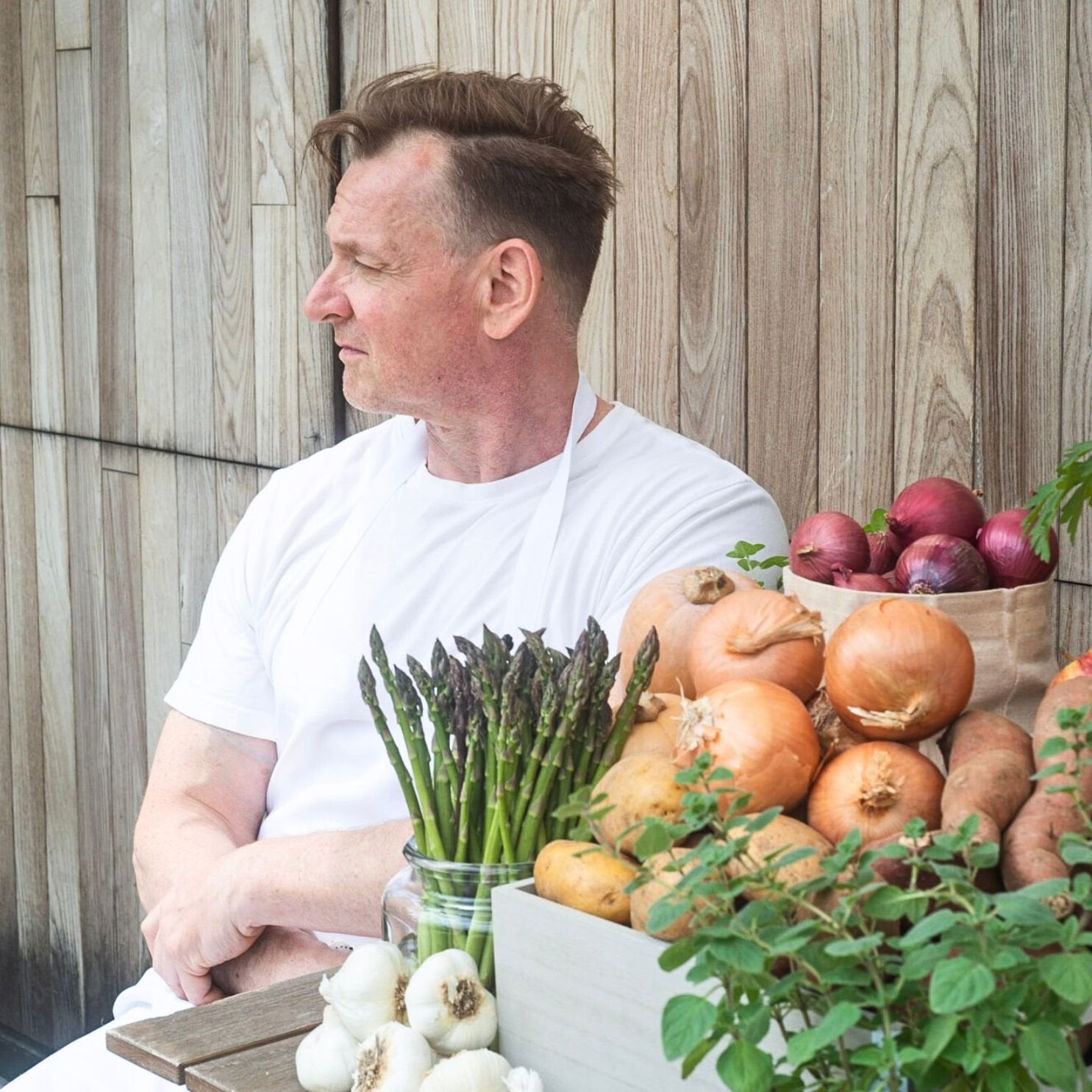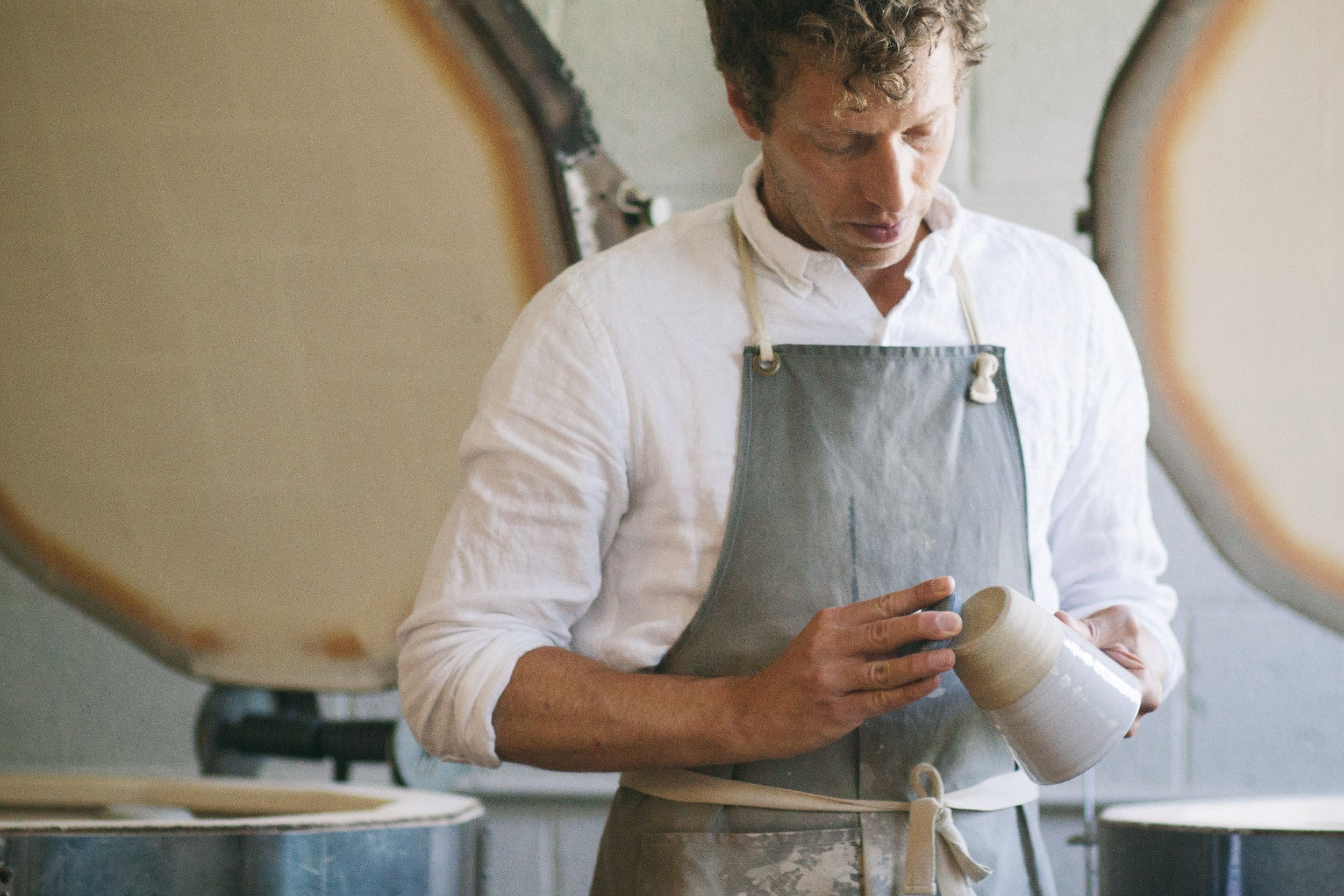Feeling Ghia with Mélanie Masarin
Mélanie Masarin stopped drinking accidentally. She was so busy in her role as head of retail and offline experiences at Glossier that she simply didn’t have time for a cocktail or a glass of wine. And once she noticed how much better she felt without alcohol, maintaining a booze-free lifestyle was an obvious choice. The only problem was she missed the complex flavors and the social aspect of drinking—so she invented Ghia.
Ghia is a non-alcoholic apéritif made with real ingredients. Mélanie designed it to taste extremely dry and refreshingly bitter—her two favorite notes from her imbibing days. It’s also free of artificial flavors, caffeine, added sugar, and gluten, so anyone and everyone can enjoy it. She only requests that you drink it chilled.
“It’s better cold,” Mélanie explains. “The drink will be more bitter if it's room temperature, so we always recommend either keeping the bottle in the fridge or pouring it on ice. I'll do one part Ghia, three parts sparkling water, and a big slice of orange. You don't have to have it carbonated, but I think the bubbles really help lift the flavor.”
Here, Mélanie shares more about Ghia, from how she developed the recipe to what’s next for the beloved brand.

Photo by Amanda Charchian
Mast Journal: What inspired you to create Ghia?
Mélanie Masarin: A few years ago, by accident, I stopped drinking. I was working for Glossier and I had a really crazy busy period of work. I always had stomach pains and I just really wanted to feel better and keep on track with my work. There's not a date where I decided to stop drinking, but I just didn't really have a drink because I couldn't for a bunch of nights in a row. And then I realized that I hadn't been drinking for a few months and felt so much better. And so I decided to keep it up. I was really confused about why no one had ever told me about the benefits of not drinking.
I also realized we're so conditioned to have alcohol pushed on us, and I was getting so frustrated about feeling excluded from social occasions because I was not drinking. And so I really wanted to create a drink that, on the culinary level, I really wanted to drink and was as grown-up and as complex as the alcohols that I liked to drink when I was drinking. But I also really wanted to change the way people think about drinking and not drinking in general and make a drink that people would gravitate towards.
MJ: That makes a lot of sense. It seems that a lot of people stopped drinking for various reasons during the pandemic and needed a non-alcoholic replacement for that.
MM: I think everyone started drinking a lot, at first, and then realized that it was unsustainable. It's hard to actually quantify because it's unclear whether alcohol sales really went down in 2020 and 2021, but we hear anecdotally that a lot of the customers that started drinking Ghia are people who started drinking quite heavily at the beginning of the pandemic and then realized the lack of social stimulation was an opportunity for them to cut down instead.
MJ: It was like a boomerang effect, almost. How did you develop the recipe for Ghia?
MM: I designed it as a drink that I wanted to drink, so I really wanted to have a drink that was dry. That was the tasting note that I was missing the most when I was sitting down at dinner. That first drink is so important in setting the tone for the evening, helping you transition from work into play. And often if I was ordering a glass of white wine or amaro or a Campari soda, I wanted something that was not too sweet. So that was the main note.
I also really wanted to have something that traveled through the palate that wasn't juice-based. We have some juices in our drink, but they're balanced with blends of extracts so that they also have a lot of different notes—not just the sweet notes. And it took us a year and a half to get the formula right. We did a lot of getting feedback from our community before we actually brought it to market.
MJ: That’s so smart. Where did the name Ghia come from?
MM: It took us a long time to find a name that we liked, but we really wanted a name that was happy. We wanted a name that could be pronounced in a lot of different languages, and we really wanted something that referenced quality, but wasn't literal about the product itself. I've always loved cars that were designed by this guy called Giacinto Ghia, who was a car designer and manufacturer that started Carrozzeria Ghia in Italy. And the Karmann Ghia is one that came out of his garage that was really beautiful, but not overly precious. You can still find them for a very reasonable price today. They feel really sleek. You can cruise around in them. They're really easy to maintain. They're not intimidating. And those were all the things that we wanted for Ghia. It’s the feeling of driving when you're on the coast somewhere, where you can't be drunk, but you feel very alive. We always say, Feels like Ghia.
MJ: Wow, what a great source of inspiration!
MM: We definitely sweat over the name. And then when Willow, our creative director, suggested Ghia, and we just knew instantly. It was a true a-ha moment.
MJ: That’s amazing. And what about the branding? How did you choose Ghia’s aesthetic?
MM: It was actually really difficult because I hadn't worked with consumer packaged goods before. But I have a very strong design point of view, and we really wanted something that references codes of the past, but also that didn't look like anything that was already out there. And when we started designing the brand, which was in 2019, everything was made to live on the internet, but I really wanted something that was made to live in the real world. So we're struggling now because some fonts don't look quite as good on our site because we picked them for a bottle. But it's loosely inspired by Memphis, and the colors are really personal colors from my memories. When we design a product, we'll design around the occasion. So it's always surrounding a moment rather than surrounding a product.
MJ: Definitely. And do you have a professional background in design?
MM: No, not really, but I always happen to do it on the side. I started my career in business, but I always loved design and I just ended up designing friends' homes and offices. And when I worked at Glossier, I was definitely super heavily involved in the design concepts of the stores. I did that for a number of brands and I designed the Sweetgreen HQ in L.A. I always have an opinion about these things and I just really wanted it to be a special way.
MJ: Oh, that’s so cool. What were the challenges of creating a consumer product for the first time?
MM: There were so many, but to be honest, the hardest part was trying to make a product that we wanted to sell to restaurants and launch it on April 1st, 2020. There are obviously many difficulties in launching anything that you haven't done before, but the first few years were particularly challenging just because it was hard to get anything done. It was hard to sell anything, but we made it.
MJ: Were you able to get Ghia into restaurants after quarantine? Or is it mostly in stores and online now?
MM: It's actually pretty much half and half. I would say for the stage that we're at, it weighs almost too much on e-commerce. And I think it's because we started there. So we have a very strong online community. We have a lot of subscribers. People also shop for this category on Amazon, pretty interestingly. And as of a few months ago, we're on Amazon. But I would say that the growth of our business over the next few years will definitely come from the offline wholesale, as we call it.
MJ: That’ll be fun to see Ghia on more menus at restaurants and bars.
MM: At the moment, we’re at the Carlisle, which is obviously very exciting. And as of recently, we're in all of the Sant Ambroeus locations, which is also very exciting. We're also at Jupiter and Lodi at Rockefeller Center in New York City. We're at Stissing House in Upstate New York, which is amazing. We're at Il Buco in the Hamptons, which is great. So all Italian-inspired.

Photo courtesy of Ghia
MJ: That is very exciting. Can you tell us about how you’ve expanded from the original Ghia bottle to other drinks and food products?
MM: The spritzes were a natural derivative of the bottle. They're made using the base of the bottle, mixed with different mixers that we also make in house. So it's Ghia and sparkling water for the Ghia Soda; Ghia and homemade ginger beer that doesn't have any added sugar for Ghia Ginger; and Ghia and fresh lime juice and sea salt for Ghia Lime & Salt, which is our most recent. We're coming out with a fourth spritz over the summer.
For holiday 2021, we were thinking about moments that are specific to the holidays, childlike wonders that you wish you still had in your adult life. And for me, it was Nutella. Nutella was such a central part of my childhood. When my parents would go out and we were with a babysitter, they'd be like, you're allowed to have whatever you want for dinner because we're going out. And we'd make crepes with Nutella. It’s always been a big thing in Europe, but now I know too much. Nutella is full of palm oil and it's just so environmentally damaging and it has so much sugar, so we really wanted to make a better-for-you hazelnut spread that was based on this memory.
The Ghianduja was supposed to be a holiday limited edition, and then we took it off the site and people were up in arms, so we decided to bring it back. But we reformulated because it wasn't holding up to the super cold temperatures very well because we only have natural ingredients in it. So we formulated it so that the olive oil wouldn't congeal and that it would always be super spreadable. And now we have this really delicious spread. It's a very small amount of our sales, but people really like it. And it's very fun to share. It becomes a magic shell when you put it on ice cream. So there's just a lot to do there.
MJ: That's so fun. And do people do pairings with the drink and the spread?
MM: Probably not together. I don't think that they would go super well because one is quite sweet and the other one is very dry.
MJ: Fair! Where did you grow up in Europe?
MM: I grew up in France.
MJ: Awesome. Do you find that your French upbringing has influenced Ghia as a brand?
MM: Oh, for sure. My family is French and Italian. And my grandmother lived in the south of France, where I spent every single full summer of my childhood. So there's a ton of inspiration from there. All of the memories that I have and all of the flavor profiles that I know and learned to cook with—because she was an amazing cook—have this Mediterranean influence that permeates everything I do today.
MJ: That’s so special. What do you envision for the future of Ghia? More drinks or more food products?
MM: Our core is always going to be centered around beverages, but we're always looking for ways to delight our customers and surprise them. So we definitely have more lifestyle products that are in development now. We're being very slow and intentional about launching new products. There are a lot of brands that have many more flavors, but we really want people to be able to integrate and find the one that's right for them. So we waited three years to launch a new bottle flavor, but it will happen in 2023.
MJ: We’ll take all the Ghia we can get! How do you think Ghia fits into the growing non-alcoholic beverage space?
MM: There's been such progress in terms of normalizing not drinking and I feel like Ghia was definitely a contributor to that. So that makes me really proud. In any category that's a little frothy there are going to be low-quality products, but that's probably going to rebalance over the next few years because it is really hard to operate a successful beverage business. But overall, seeing so many restaurants carry non-alcoholic drinks and creating non-alcoholic menus is the most exciting because at the very beginning it was like, here are some drinks, but you have to enjoy them from the comfort of your home, which ultimately goes against our mission of inclusivity. We're seeing exponential progress on that front and that's really cool.
MJ: It is! Have you collaborated with any like-minded brands in the space?
MM: There are a bunch of products that I consume that are smaller and more independent, but if we reference brands that we love, they're often not in this category. We did a collaboration on glassware with our friend Sophie Lou Jacobsen. We get asked a lot, what's the right vessel for Ghia? So we wanted to create a vessel that blurs the line a little bit between the nighttime and the daytime. It's a stemless martini glass that has a strong Memphis influence. It's called the Totem Glass because there's a low cone that makes up the stem of the glass. It's really beautiful and I also like to use it as an ice cream cup. It was very delightful to work with her.
MJ: That’s the perfect collaboration. What else do you need for a drink, but a vessel to put it in?
MM: Exactly.
More from The Journal

Simple Cooking with Chef Franz
In conversation with Chef Franz Fruhmann, the chef of Mast Market, talks about his astounding experience, inspiration, and commitment to keeping it simple.
Read more
Turning the Wheel with James Zilian
Ceramicist James Zilian talks with the Journal about his path to starting Farmhouse Pottery and what is next for the beloved and trendsetting Vermont based studio.
Read more